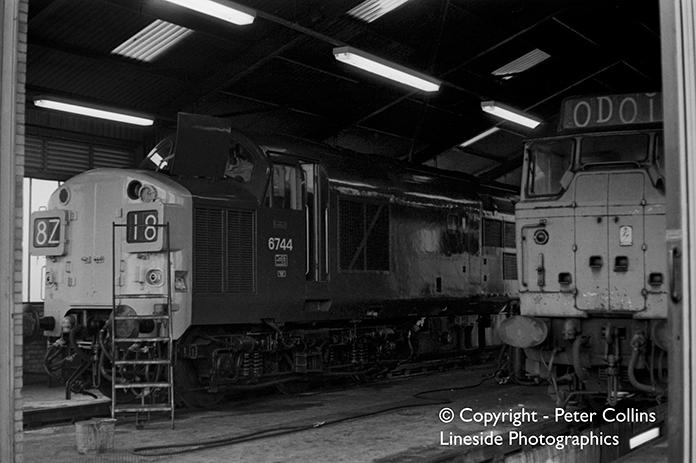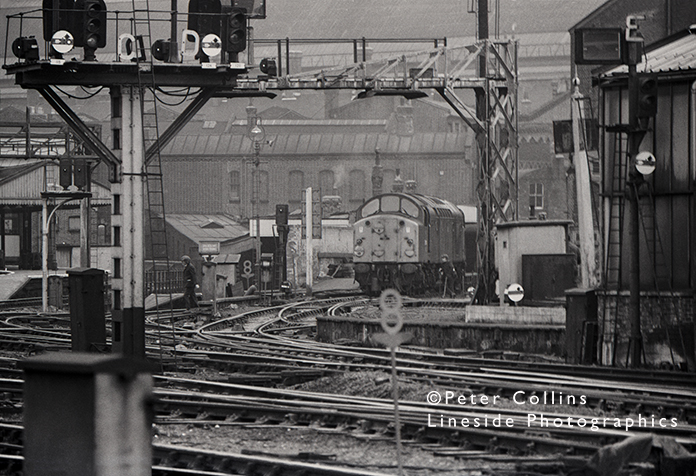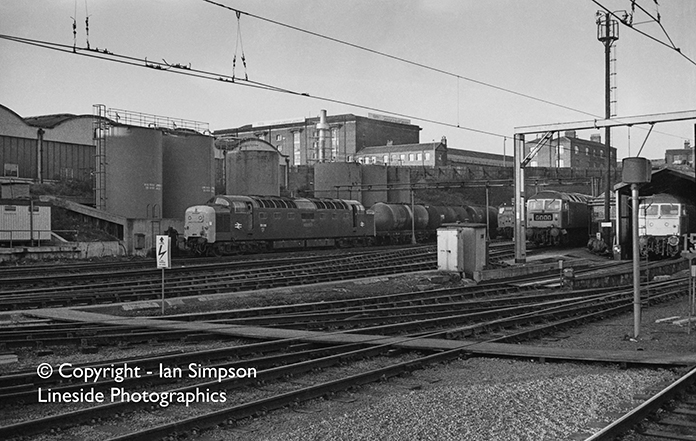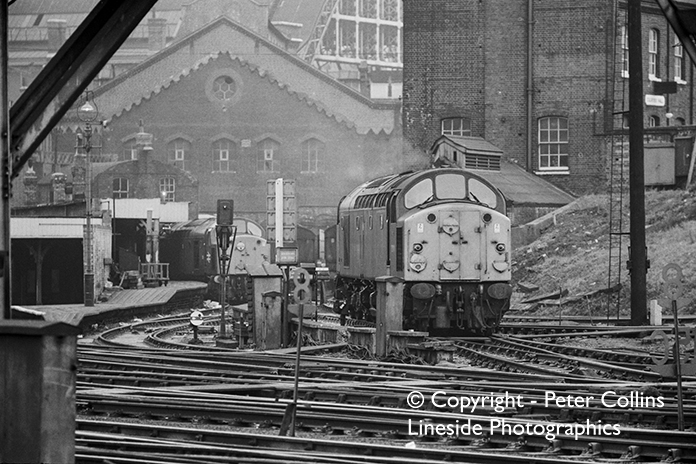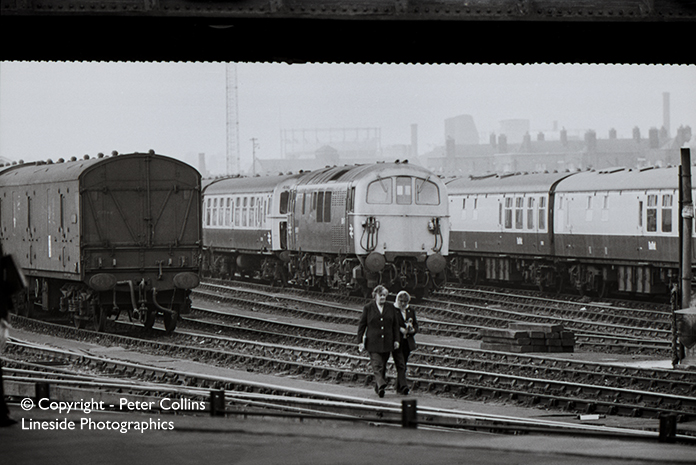
Electro-Diesel Class 74 E6007 awaits its next duty at Clapham Carriage Sidings sometime in the early 1970s. Two Ladies walk back towards Clapham Junction station deep in conversation, but who are they and what are they doing?
This fascinating photograph by Peter Collins shows two ladies deep in conversation as they walk towards Clapham Junction station from the adjacent Carriage Sidings. I know its a long shot, but does anybody recognise them, or possibly know what role they had with the railways. The photograph was taken sometime in the early 1970s.
The GUV parcels van will be working a postal or newspaper train later in the day from Waterloo, possibly hauled by E6007. The TC set behind the ‘ED’ is a familiar site; but what is intriguing are the two Buffet cars in a rake off coaches seen on the right of the photograph.
Given the photo is of Clapham carriage Sidings this isn’t unusual in itself, but did any of the Boat Trains run from Waterloo have two adjacent Buffet cars in the formation?
Anybody who can help identify the two ladies or their possible job, or who can yield information on the 2-Buffet train formation please contact us using the form below or via Social Media
Error: Contact form not found.

